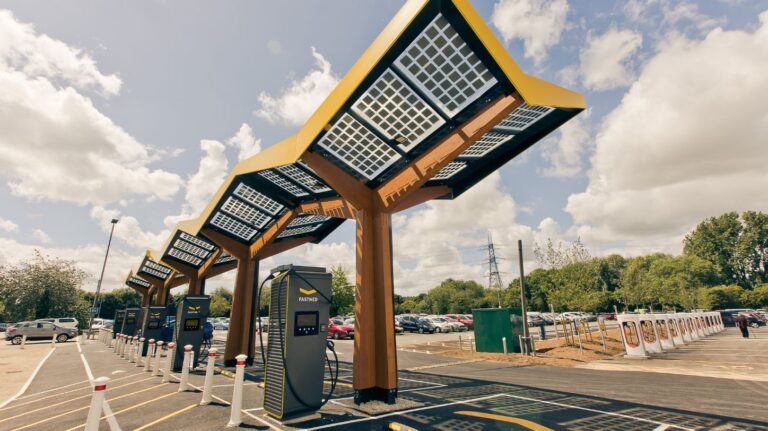Energy Superhub Oxford (ESO) has reported that, since its opening last year, around 32,000 vehicles have been charged at the facility.
The hub was developed through a partnership between EDF Renewables UK, Oxford City Council, Fastned, Tesla Superchargers and Wenea, with the intention of reducing carbon emissions and encouraging the uptake of EVs across Oxfordshire.
It was intended to be the most powerful hub for EV charging in Europe, with the reported capacity to charge 42 vehicles simultaneously.
According to a company statement, approximately 732.66 tonnes of carbon have been saved through charging activity so far.
The rapid charging hub is a ‘new model’ established by the renewable energy firm, which it describes as the UK’s first hub to use transmission-connected batteries combined with an EV charging network.
The station was set-up to reduce overburdening the local electricity grid, and forms part of a broader mission to introduce green transport options across Oxfordshire.
Other key initiatives that form part of the local authority’s ambition to reach net zero carbon emissions by 2040 include introducing a new fleet of electric buses and its Zero Emission Zone in the city centre.
Read more: From A to ZEZ – what to know about Oxford’s Zero Emission Zone
Cllr Anna Railton, cabinet member for zero carbon Oxford and climate justice, Oxford City Council, said:
“It is very exciting that the Energy Superhub Oxford project has achieved one year of operation. This was a significant moment for our city as we work to become a zero-carbon Oxford by 2040 and I am delighted that so many people have visited and used the Superhub.
“This is a prime example of how private companies and local councils can work together to achieve net zero.”
The Oxford hub is one of a planned nationwide rollout of Energy Superhubs, with the company expecting to deploy 40 similar sites across the UK to provide increased clean energy and energy storage infrastructure across the nation.





